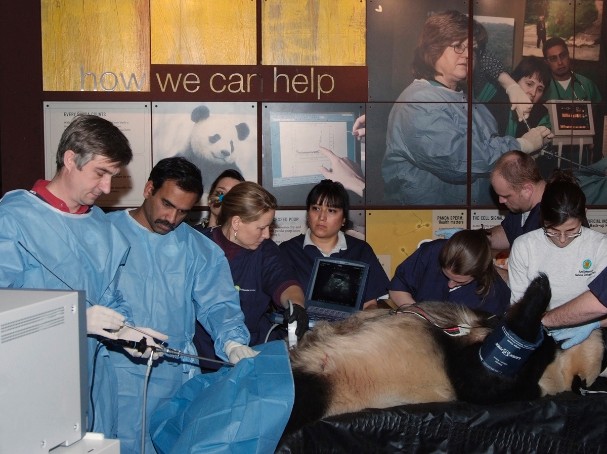Artificial Insemination
Artificial insemination is one method that was being experimented with Giant Pandas to improve its declining population in this world. Artificial insemination is a procedure where veterinarians recover sperm from a male panda by using an electroejaculator that is placed on the male panda's reproductive glands which causes the collection of its semen. Once the semen is collected it will be injected or released into a female panda's cervical canal where it will be impregnated. These veterinarians/scientists are very cautious in artificial insemination procedures within these pandas by using drugs or anesthetics such as ketamine and propfol to contain the pandas behavior or mood. Artificial insemination has recently become a very successful method in helping to reproduce giant panda population. (The World's First Panda Cub From Artificial Insemination)

Cloning
Cloning within giant pandas have been a very controversial procedure to improve giant panda population but ever since the successful cloning of Dolly, the sheep, ideas of cloning pandas grew and would eventually come into experiment. The cloning method is actually very similar to the cloning of any other animal but the only difference is the animal. It is all biotechnological. First scientists recover the DNA of a male panda and cut it up with enzymes. Then they combine one DNA sequence to that of another female panda's DNA to form recombinant DNA. Then restriction enzymes come into the picture and cuts the recombinant DNA into fragments and are then introduced into a bacterium where they replicate and reproduce. The DNA in the bacterium then is easily extracted from the cell culture and is introduced into another cell in which reproduction occurs rapidly in the cell's body. The DNA is successfully introduced when you see bacteria growing in the cytoplasm.
